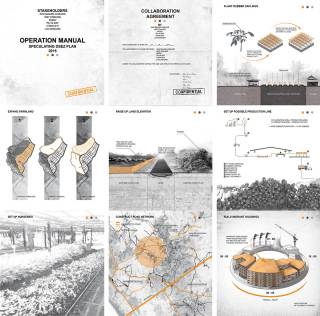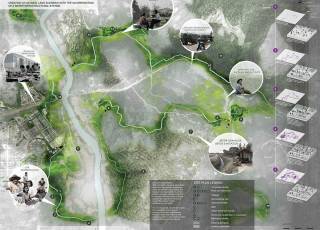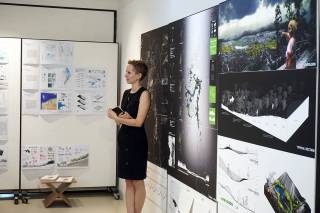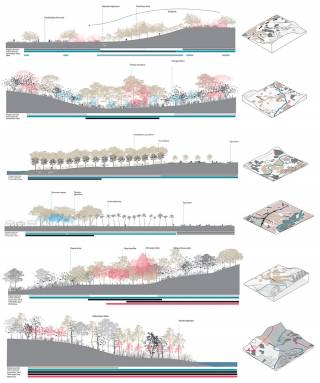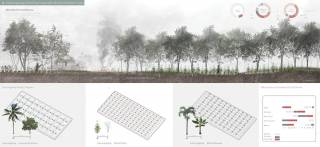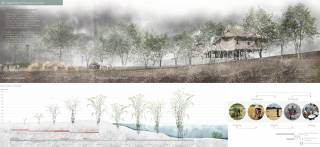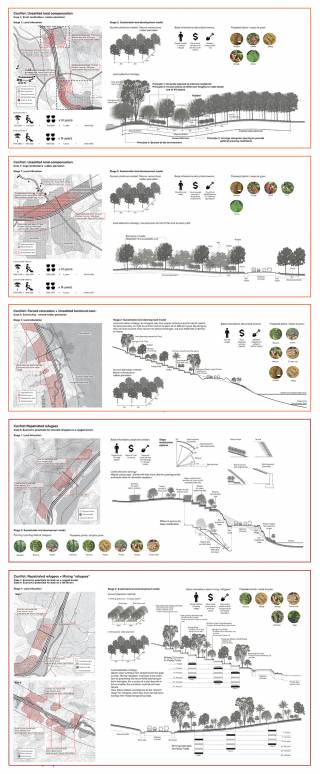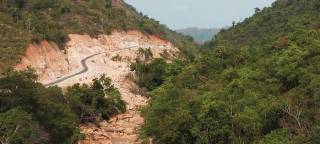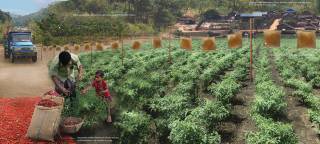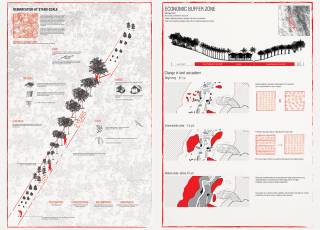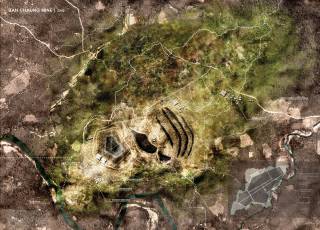Course abstract:
Large-scale regional planning and infrastructure development is often implemented with a virtual absence of people on the ground, creating conflicts in land tenure, economic livelihood, and environmental resource use and conservation. "Design on the Road to Burma" takes students' learning to the frontier landscapes of transnational development along the Thai-Myanmar border, reinforcing the importance of fieldwork in reconciling abstract geographical data and real site conditions. Recently revived investment in the 250-square-kilometer industrial port of Dawei, Myanmar's first Special Economic Zone (SEZ), and a 212-kilometer cross-border road link is prompting urban development and large-scale land use change within one of last intact forest corridors in the region. Students spend the first six weeks producing a collective research report that combines detailed timelines on regional development and environmental conservation with international case studies and narrates landscape processes in situ from mining extraction and afforestation to wildlife movement.
During field work, students traveled overland via Bangkok into Dawei, Myanmar and presented their research to several international NGOs and local CSOs, including the World Wide Fund for Nature (WWF), Wildlife Conservation Society (WCS), Fauna and Flora International (FFI), The Border Consortium (TBC), the Norwegian Refugee Council (NRC), EcoDev, and Dawei Development Association (DDA) at their field offices and locations in Yangon. Students visit sites including large industrial estates along Thailand's Eastern Seaboard, Map Ta Phut and Laem Chabang, Myanmar's resettlement housing at Dawei, community forest programmes and national parks, the Mergui Archipelago's fishing villages, and village-led conservation initiatives. Proximity to Thailand and recent "opening up" of the region to transnational forces makes this both an important case study and viable site for designers to provide alternative development strategies to a complex set of actors. For the second half of the course, students develop design proposals that engage development projects, including resettlement, community forestry, corporate social responsibility programmes, ecotourism, sustainable agroindustry, and "green" capacity building programmes.



